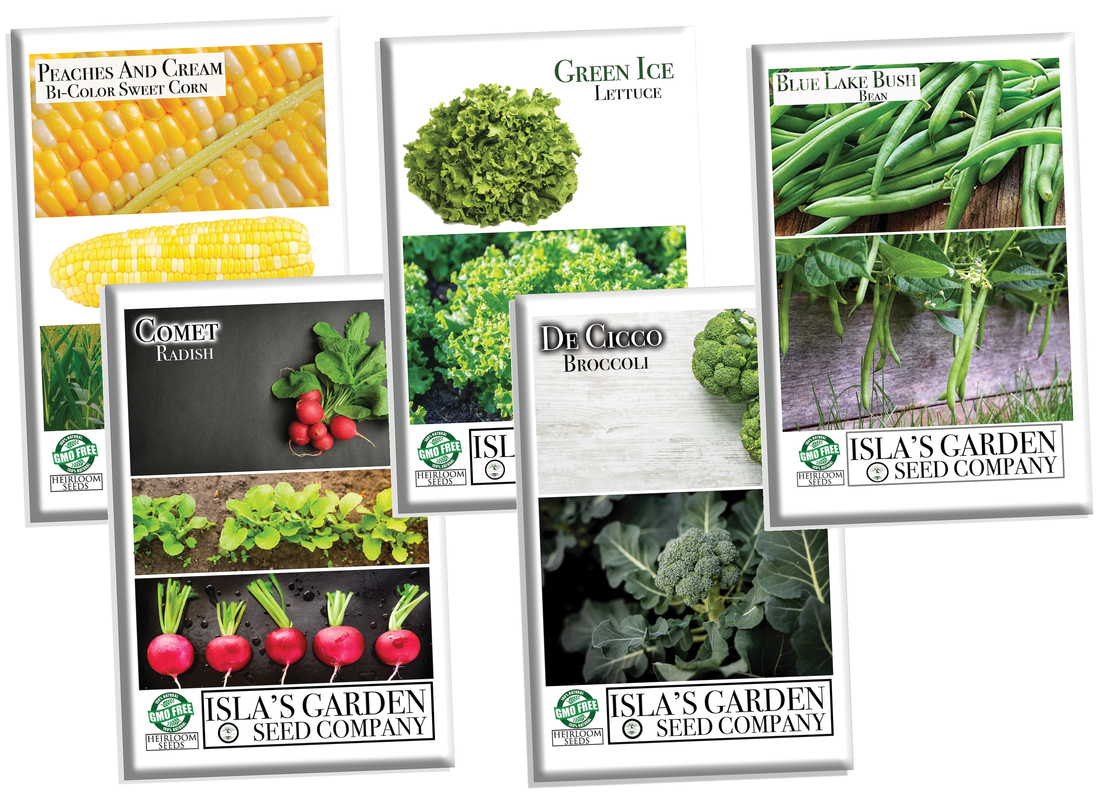Waiting too long to organize your seeds could cost you three times more than necessary when buying seed starting supplies. Rather than scrambling at the last minute, proper seed organization can save you both money and stress as the gardening season approaches.
Transforming your seed management can be simple. You can create order from chaos in less than an hour by organizing your seeds and keeping a proper inventory.
Taking Stock of Your Seed Collection
Gather all your seed packets from their various storage spots - mudroom shelves, garage corners, kitchen drawers, and wherever else they may have landed during the growing season.
Most garden seeds maintain their viability for 1-5 years, though specific lifespans vary by type. Short-lived seeds like corn, onion, and parsley last 1-2 years, while intermediate seeds such as asparagus, beans, and peas remain viable for 3-4 years. Long-lived varieties, including beets, tomatoes, and cucumbers, can stay good for 4-5 years.
Begin by grouping similar seeds together - all kale varieties in one pile, lettuce in another. While you're sorting, examine dates on seed packets since viability decreases yearly based on storage conditions. Sort packets by plant type or sowing time or alphabetically. Choose the method that best matches your gardening approach.
If you've got some older seeds, you should check their viability before adding them to the collection. There's no point in storing seeds that are probably too old to sprout reliably.
To test seed viability:
- Place 10 seeds on a damp paper towel and fold it over gently.
- Seal the towel in a plastic bag and store it in a warm location, ideally above 70 degrees.
- Monitor the seeds daily - quick-sprouting varieties like radish germinate in 2-3 days, while peppers might take 10-14 days.
- Calculate the germination rate by dividing sprouted seeds by the total seeds tested. Generally, seeds with over 50% germination rate remain usable.
Review your garden journal and photos from previous seasons to identify successful varieties. Document which seeds performed well and which ones disappointed, to use for future planning. Create a detailed inventory using a seed organization system - whether it's a simple spreadsheet or a dedicated garden planner.
Store organized seeds in a cool, dry place protected from insects. For long-term storage, place seed packets in sealed jars. Or, use photo albums with pocketed sleeves or accordion files to keep categories separate.
Essential Seed Storage Systems
A good seed storage system protects your garden investment from moisture, temperature changes, and pests. By keeping your seeds organized, you ensure they stay viable until it's time to plant.
Creating an effective seed organization system starts with gathering the right supplies:
- Storage Containers: Photo storage boxes with 16 individual 4x6-inch compartments are great. They perfectly fit standard seed packets with room to spare.
- Moisture Control: Silica gel packets help manage excess humidity, especially in areas prone to dampness.
- Labels and Dividers: Use masking tape and permanent markers or a label maker to mark container sections clearly. Create dividers based on seed types or planting schedules.
- Airtight Containers: Mason jars or containers with tight-fitting lids prevent moisture infiltration. These also protect seeds from curious rodents and insects.
To store seeds for a long time, keep them at a consistent temperature between 32-41°F. For most home gardeners, a cool, dark closet or cupboard that stays below 55-60°F is also a good option.
Always seal storage containers tightly after each use. Check that no moisture is trapped inside seed packets. Periodically inspect the containers for pests or condensation, as these can harm the seeds.
Many people keep track of their seed inventory digitally, either through apps or spreadsheets. When building your digital inventory, focus on the information that matters most for your gardening style. Consider tracking:
- Days to maturity for succession planting
- Location details for crop rotation
- Seed expiration dates
- Performance notes from previous seasons
- Purchase sources and costs
- Container compatibility
- Special growing requirements
After the planting season ends, update your digital records to keep track of seed quantities. This helps you know what seeds are available when planning next year's garden. Take note of which varieties did well in your climate and which ones did not. This will help you make better choices when buying seeds in the future.
To organize your spreadsheet, create separate tabs for each plant category: vegetables, flowers, and herbs. This setup helps you find specific varieties more easily when planning. If possible, choose a system that you can access while shopping for seeds, especially at farmers markets or garden centers.
Building Your Seed Starting Station
A good seed starting station is key to being a successful gardener. To set it up properly, focus on your equipment, lighting, and environmental controls.
Start by choosing shelves that can hold standard 1020 trays. A metal wire shelf unit that measures 48 inches wide and 20-24 inches deep works well for seed-starting containers. It is important to pick shelves with openings instead of solid surfaces. This helps with light positioning and allows for proper airflow.
For the best seedling growth, use full-spectrum LED shop lights. Hang these lights with chains and S-hooks to adjust their height as the plants grow. Keep the lights no more than 4 inches above the seedlings' tops, and as close as 2 inches is ideal to avoid leggy growth. Plug the lights into a timer to provide 12-16 hours of light each day.
Temperature is important for seed germination. Heat mats keep the soil warm, which is helpful since indoor containers can be 5°F cooler than the room temperature. Use a thermostat controller with the heat mats to avoid overheating.
Essential equipment for your station includes:
- Humidity domes to maintain moisture during germination
- Small clip-on fans for air circulation
- Bottom trays without drainage holes for water management
- A spray bottle or watering can with small holes
- Clear labels to track plantings
- Proper ventilation prevents damping-off disease and strengthens seedling stems. Install small fans at each shelf level, mimicking natural breezes. This air movement helps develop sturdier plants while reducing fungal issues.
Preparing Seed Starting Materials
Soil mix preparation
A quality seed starting mix differs fundamentally from standard potting soil. The ideal mix contains three primary components: one-third moisture-retention ingredients, one-third drainage materials, and one-third fertility-based ingredients.
We like the combination of coconut coir with perlite and vermiculite. Although peat moss works effectively, coconut coir is a more environmentally friendly alternative. Sift all organic materials through a ½-inch hardware cloth to remove unwanted debris.
Mix the organic matter with the drainage material. Next, moisten the blend until it reaches the consistency of a wrung-out sponge. This moisture level prevents overwatering issues that often lead to fungal growth.
Container sanitization
Clean containers prevent damping off disease and other plant pathogens that can devastate young seedlings. Begin by removing all loose soil particles from containers using a brush or rag. Afterward, wash thoroughly with hot, soapy water to eliminate remaining debris.
For effective sterilization:
- Bleach Solution: Soak containers in nine parts water to one part bleach for 10 minutes
- Hydrogen Peroxide Method: Spray containers with 3% hydrogen peroxide and let sit for 20 minutes
After sanitizing, rinse containers thoroughly with clean water. For clay pots, soak them in water until use. Dry clay can pull moisture away from newly planted seeds. Store sanitized containers in a clean area until needed.
Avoid using garden soil for seed starting, as it often harbors pathogens and compacts easily. Standard potting soil typically contains harsh fertilizers and chunky materials that can hinder seed germination.



